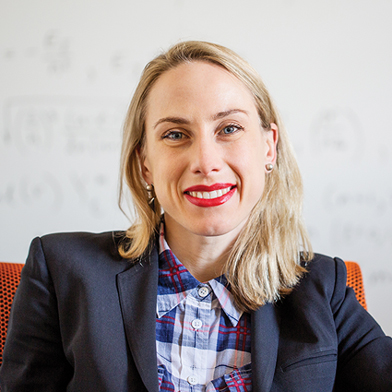 Today, MIT Technology Review revealed its annual list of Innovators Under 35. For more than a decade, the company has recognized a list of talented technologists whose work has great potential to transform the world. For her work in the field of nanotechnology and materials, Polina Anikeeva—who is a lead investigator at the CSNE—has been recognized as a pioneer on the list.
Today, MIT Technology Review revealed its annual list of Innovators Under 35. For more than a decade, the company has recognized a list of talented technologists whose work has great potential to transform the world. For her work in the field of nanotechnology and materials, Polina Anikeeva—who is a lead investigator at the CSNE—has been recognized as a pioneer on the list.
Dr. Anikeeva, assistant professor in the Department of Materials Science and Engineering at MIT, took some time to reflect on the award and shared a few of her secrets for success.
Q: In receiving this honor, how does it feel to be mentioned in the same breath as Larry Page and Sergey Brin, Mark Zuckerberg and Helen Greiner?
A: I feel very flattered, but, ultimately, my students and postdocs really deserve the credit. Next to every principal investigator, there is a group of talented and hard-working people who make amazing things happen in the lab every single day.
Q: You've had quite the year, including a TEDx talk, research published in Nature Biotech and Science, a new MIT title, a feature on your work in MIT Technology Review and now the TR 35. How will you top 2015?
A: It probably looks like things really took off this year, but from the inside, it all seems like more of a coincidence. My students and I worked and worked and worked for the past four years to have our ideas come to life. So it’s really not about trying to top 2015, but rather about turning another round of concepts into reality – that’s what I’m excited about.
Q: How has your research been enhanced through the CSNE?
A: CSNE has been an intellectual home-away-from-home for me. It’s a community that has helped my students and me to see our work in the context of prosthetics. We have wonderful collaborators through CSNE and we really can’t wait to see what happens next with research at the center.
Q: You've found time in recent years to run the Boston Marathon and you’re also into rock climbing. What tips do you have for researchers in finding that work-life balance?
A: I got a head start on running and climbing in grad school – now all I have to do is to keep it up. In terms of tips, it’s actually pretty easy – all I do is work and exercise. I never watch TV, all of my social interactions happen at work or while climbing, and often I’ll be solving problems while running, so rather than trying to balance work and life I merge the two.
Q: There's a pretty constant barrage of media stories these days about the challenges women face in STEM careers. What advice do you have for young women who are interested in engineering but might be dissuaded because of some of the barriers that still exist in academia or industry?
A: It is disappointing that so many women feel unwelcome in technical fields. This is a sentiment that I do not happen to share. I was very fortunate to have supportive and yet demanding graduate and postdoctoral mentors. Also being at MIT, an engineering institution that enrolls an equal number of female and male undergraduates, I feel very optimistic about how diverse the engineering workforce is becoming.
